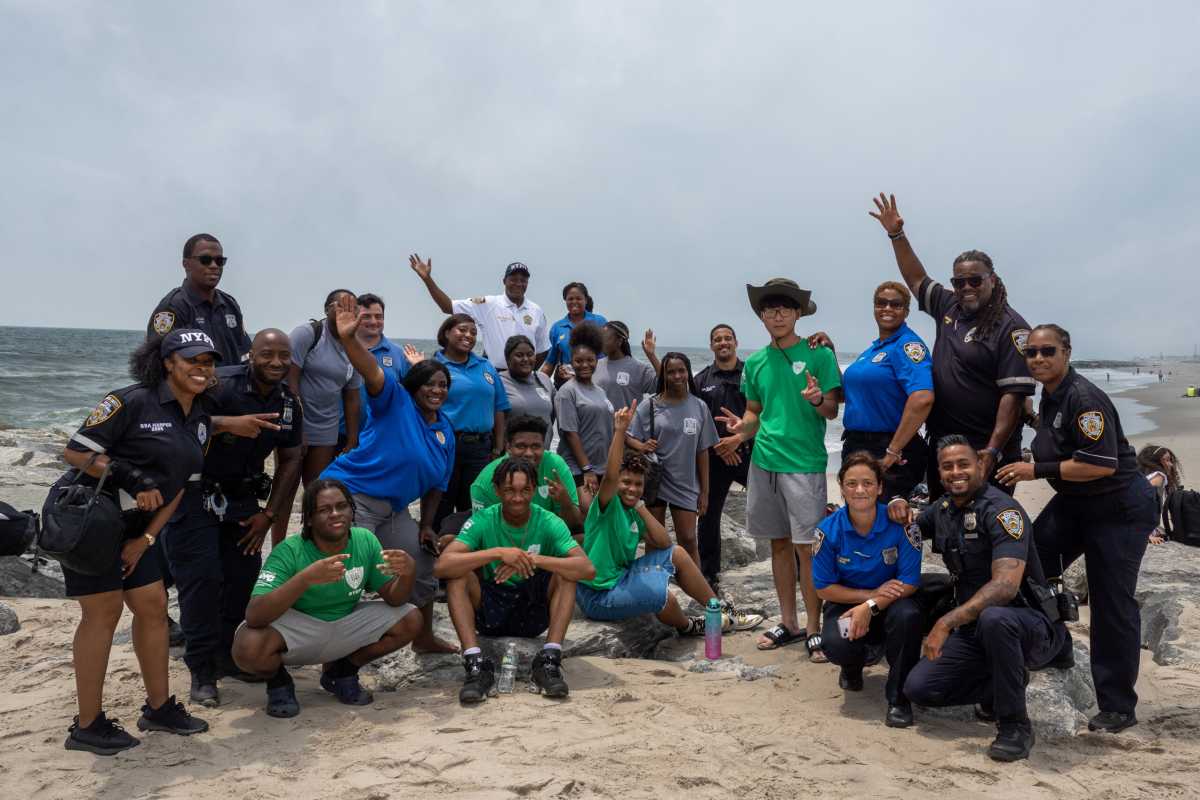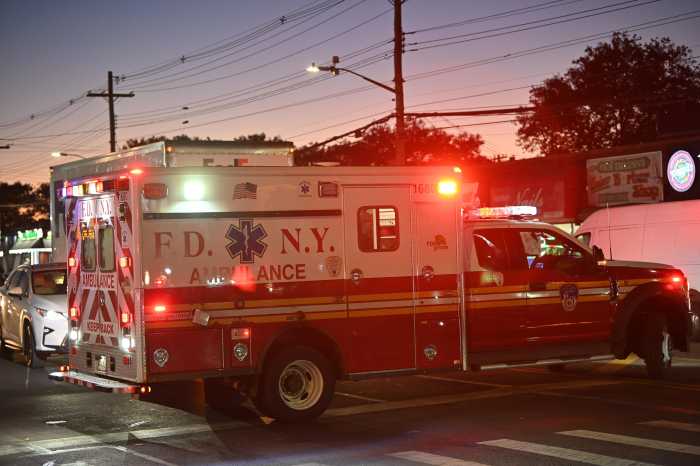Summer is here and with New Yorkers heading to the beach to beat the heat, the NYPD Community Affairs Bureau hosted a beach safety event with the NYPD Scuba team in Far Rockaway on July 18.
NYPD Community Affairs Bureau Det. Tanya Duhaney said the NYPD had organized the event for the last three years because too many people drown on local area beaches.
“We just wanted to give beach safety to the young kids that tend to come out here,” Duhaney said. “Often they [come] past the time of a lifeguard, or late at night just hanging out with friends. We just wanted them to know certain things about the water.”
Young people with the NYPD Explorer program hailing from all five boroughs listened closely as NYPD Det. Robert Rodriguez explained to the crowd what to look out for when visiting the beach with friends and family.
Twenty-two-year NYPD veteran Det. Robert Rodriguez has been a member of the NYPD scuba team for about 18 years and said his department liked to reach out to the community and teach them about water safety.
The scuba team, established in 1966, is on-call 24/7, and its responsibilities include counterterrorism and water search and rescue missions, among others.
“Our job, unfortunately, a lot of the times is to do recovery work,” Rodriguez said. “A lot of times, [it’s] just inanimate objects like guns and things like that, but a big part of our job is recovering bodies. Unfortunately, we’ve already had a few this year and we just want to educate the public.”
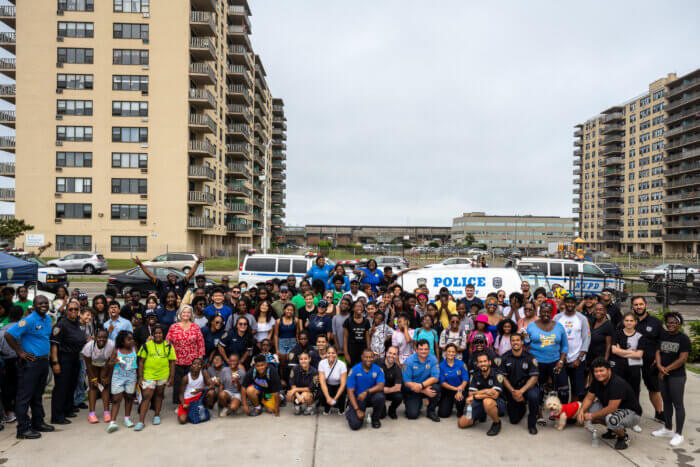
Rodriguez said the first thing to do when spending a day on the beach was to check the safety boards posted along the boardwalk and ask lifeguards about the water conditions. Lifeguards on city beaches are on duty from 10 a.m to 6 p.m during the summer season, and beachgoers should never enter the ocean after hours, as tempting as it might be to cool off on a hot summer’s day.
“The sign right there to the entrance of the beach, it tells you today that there are flags out there on the beach. There’s no swimming today,” Rodriguez pointed out.
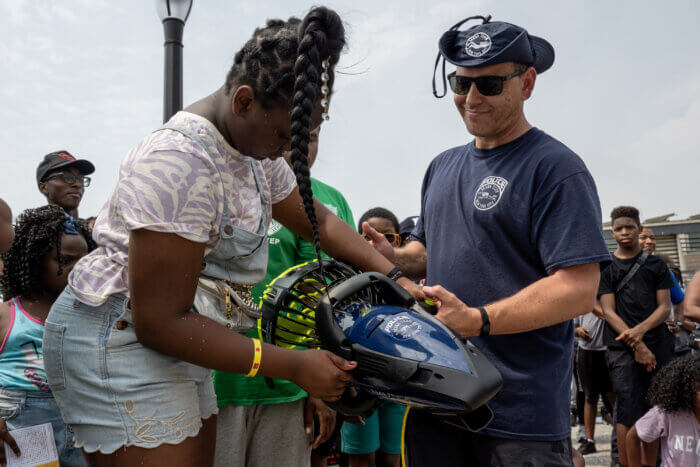
Even if beach visitors are strong swimmers, they can still be at risk of drowning if they ignore the warning signs. On the day of the event, red flags indicated that swimming was halted because of rip currents.
Rip currents are caused by a break in sandbars forming a channel and can pull swimmers away from the shore in mere seconds.
“That channel has water that flows back and forth through it. Because it’s a small channel, the water goes fast in and fast back out and that is a rip current,” Rodriguez explained. “That current is perpendicular to that sandbar or perpendicular to the beach.”
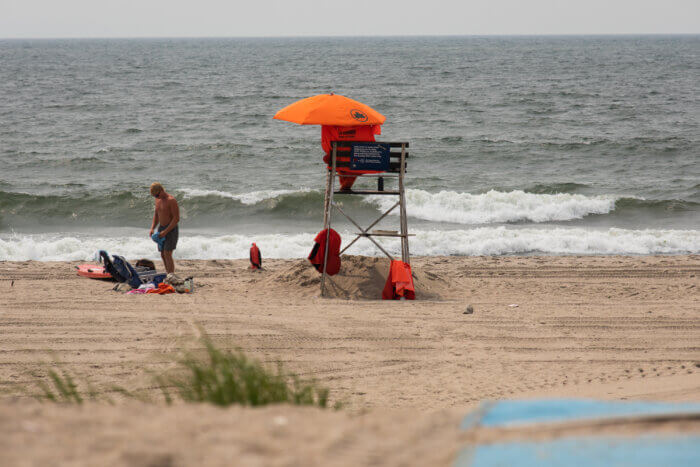
If a swimmer gets caught in a rip current, trying to swim against the current is too difficult, leading to quick exhaustion, according to Rodriguez, who advised staying calm and swimming parallel to the shore until the swimmer is out of the current.
“Eventually, you will get out of the rip current. That’s when you start approaching the beach calmly in a calm swim,” Rodriguez said.
Alternatively, swimmers should float or tread water until they are free of the rip current and head to shore. If swimmers can’t get to the beach, they should draw attention to themselves by waving and calling for help.
Non-swimmers should only go into the water as high as their waist.
“If you go into the water above your waist, that’s the danger zone. That’s the danger height because the water now can control your body weight,” Rodriguez said.
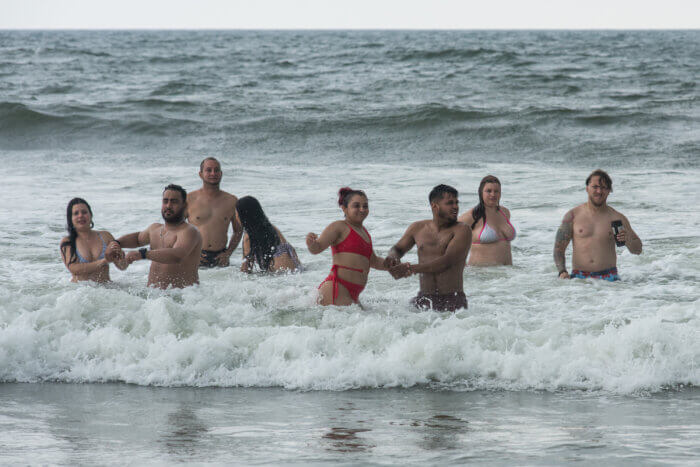
Rodriguez also urged the participants to spread their newfound knowledge.
“Be the smart person in the crowd,” Rodriguez said. “Be the one to say, ‘Do you swim? And why are you going in that body of water? Michael Phelps could even get in trouble in that water.'”
According to Shawn Slevin, founder and executive director of Swim Strong, 11 people drown in the United States daily, and eight suffer brain and spinal cord injuries due to water-based accidents.
Since 2017, the organization has provided swim lessons to over 10,000 people and more than $1 million in free swim lessons.
Slevin urged the young people never to enter the water without lifeguards present.
“Even if there is a lifeguard, make sure you have a buddy,” Slevin said. “Because if you get incapacitated, at least your buddy can alert the lifeguard that you need help.”
The fun part of the event included a show and tell of some cool equipment. The kids had the chance to check out the scuba diving gear, which weighs 90 pounds.
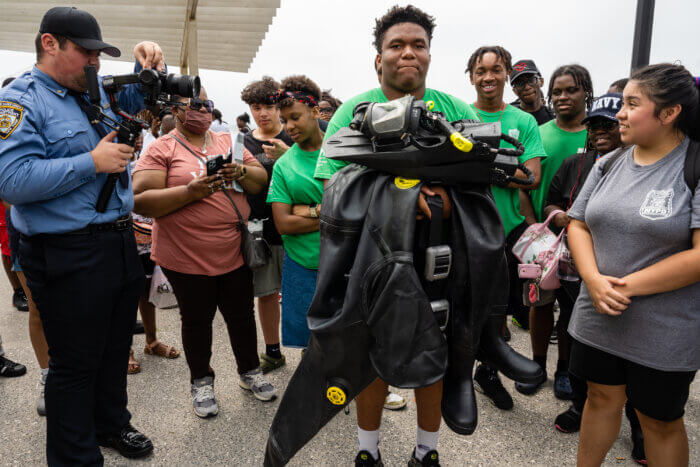
Part of the equipment includes a sea scooter which helps the NYPD scuba divers to move underwater with less physical effort and conserve energy.
“It goes under and on top of the water, and it makes our job a little more efficient,” Rodriguez explained.
Some of the NYPD explorers shared that they didn’t know what the flags meant or the danger of rip currents before the event.
Bronx resident Giovanni Rose, 16, said, “I have seen flags on the beach, but I haven’t really known what they meant,” Rose said. “So I’ve been going into the water, and thank God nothing happened to me. But still, I’m happy to share the information.”
Godwin and Wilson, 16, from Brooklyn said they were going to be a lot more careful next time they visit the beach.
“And make sure like people I know don’t drown. So don’t go in the water when they are not supposed to,” Wilson said.
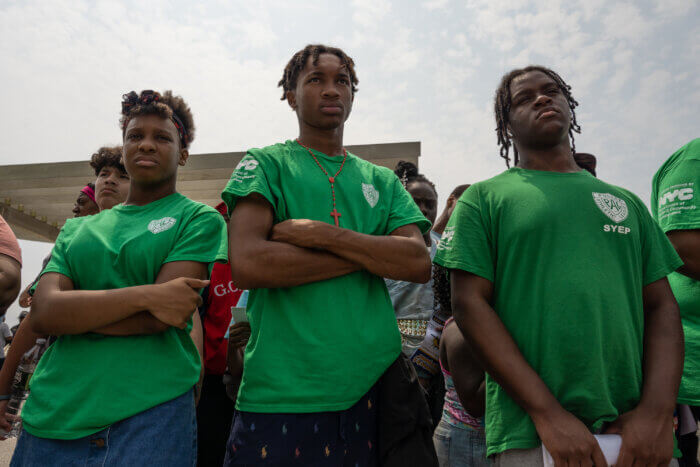
Assemblywoman Stacey Pheffer Amato, who represents Far Rockaway, praised the event.
“Events like this with the NYPD Scuba Team and our amazing NYPD Community Affairs Officers, who bring children from all five boroughs to Rockaway Beach to learn about swimming, are incredibly important,” Pheffer Amato said. “While I am glad to have raised some awareness on water safety through my legislation in our State Capitol, it is in partnership with lessons on water safety that help with drowning prevention. This is a conversation for everyone, and it’s great to see it get the attention it deserves.”

